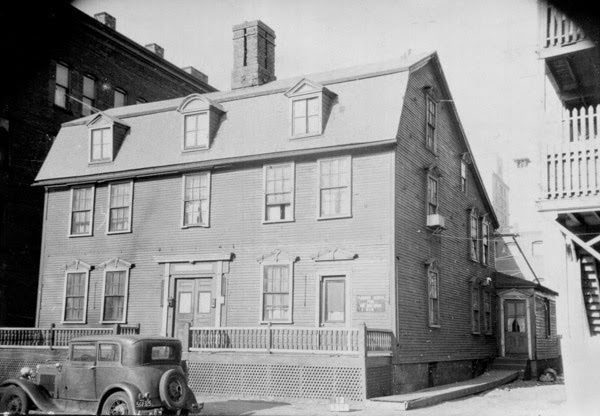Despite being one of the oldest cities in Massachusetts, Springfield does not have any known surviving colonial-era buildings in the city. In many ways, this was due to the economic prosperity that Springfield experienced in the late 19th and early 20th century, when many historic colonial homes in the downtown area were lost to new commercial developments.
However, at least one colonial-era home from Springfield is still standing, although no longer in the city. The Josiah Dwight House, which was built around 1754, once stood on the west side of Main Street, between Bliss and Howard Streets. It was probably the last remaining colonial building in Springfield, and it remained here until 1950, when it was dismantled and rebuilt in Deerfield.
The house was originally owned by Josiah Dwight, a member of one of the most prominent families in the Connecticut River Valley during this time. After his death in 1768, Josiah’s son Thomas inherited the house, and he lived here until his own death in 1819. During this time, Thomas Dwight enjoyed a successful career as a lawyer and politician, including as a state representative, state senator, and one term in the US House of Representatives from 1803 to 1805.

The house stood at its original location throughout most of the 1800s, but by the end of the century its South End location was no longer the desirable residential location that it had been a hundred years earlier. So, at some point around 1890 it was moved around the corner, to the north side of Howard Street, and converted into a two-family home. Among its owners during this time was George J. Seuss, the grandfather of Dr. Seuss, who used it as a rental property.
In 1917, the Springfield Republican identified this house as the only surviving colonial-era building in the city, while also acknowledging its deteriorated condition. It stood here for several more decades, but by the late 1940s its was threatened by demolition. To prevent this, Henry and Helen Flynt, the founders of Historic Deerfield, purchased it and brought it to Deerfield. This process involved meticulously dismantling, documenting, and reconstructing it at its new site.
Today, the Dwight House stands among the many other historic colonial homes at Historic Deerfield. However, the one part of the house that is not original is, ironically, its most distinctive architectural element. The original doorway, with its ornate scroll pediment, was removed in 1924, and it is now on display at the Winterthur Museum in Delaware.

